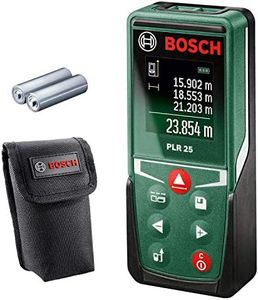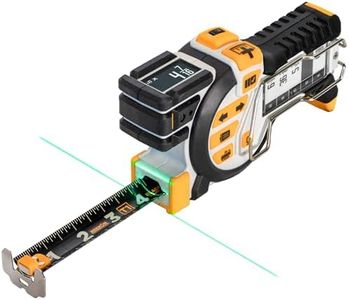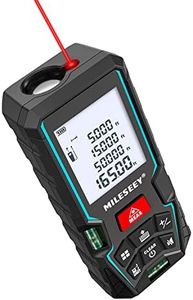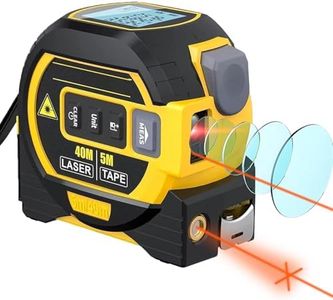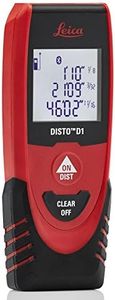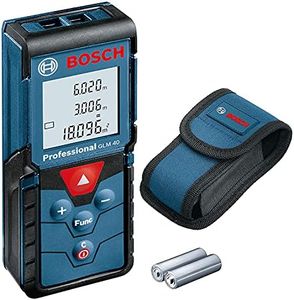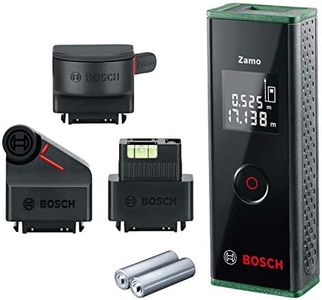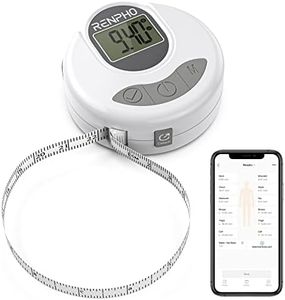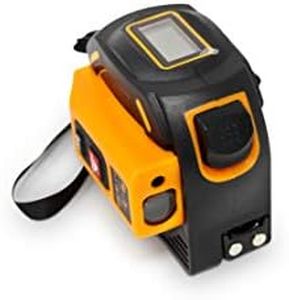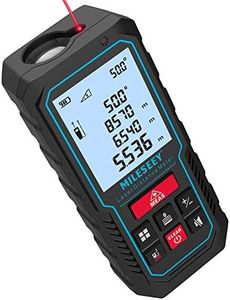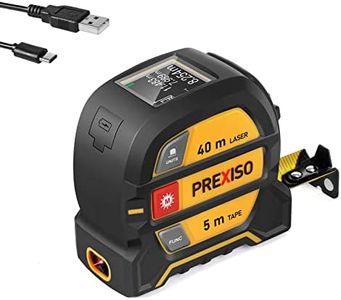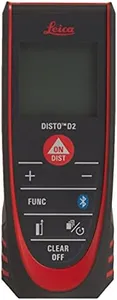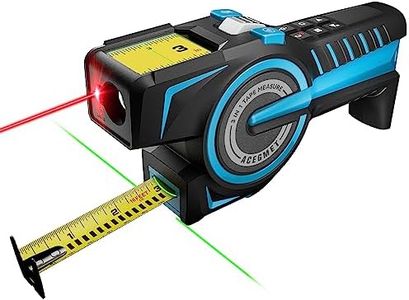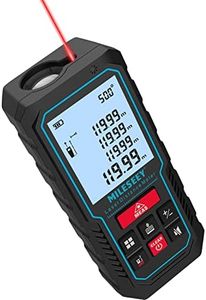We Use CookiesWe use cookies to enhance the security, performance,
functionality and for analytical and promotional activities. By continuing to browse this site you
are agreeing to our privacy policy
10 Best Digital Tape Measures
From leading brands and best sellers available on the web.Buying Guide for the Best Digital Tape Measures
Choosing a digital tape measure can make measuring tasks faster and more accurate, whether you're working on home projects, construction, or crafts. Rather than just going for the first model you find, it helps to know what makes one device better suited for your needs than another. Understanding the main features and specifications will help you pick a tool that will make your measuring experience efficient, reliable, and easy.Measurement RangeMeasurement range refers to the maximum and minimum distance the tape measure can accurately measure. This is important because it dictates what kinds of projects you can tackle. Shorter ranges (up to 16 feet or 5 meters) are great for small indoor tasks, while longer ranges (over 25 feet or 8 meters) are better for construction or outdoor work. To choose the right range, think about the typical distances you'll measure; pick a range that comfortably covers your usual tasks, but don’t obsess over getting the highest possible number if you rarely measure large spaces.
Display TypeThe display shows your measurement readout, and its clarity can greatly affect your user experience. Displays can be simple or backlit for better visibility in poor lighting. Some offer large numbers or multiple readout lines. If you often work in dim areas, prioritize a backlit and easily readable display. If your eyesight isn't perfect, a display with large digits can reduce errors. Always consider when and where you’ll use the tape measure to decide what type of display you’ll need.
AccuracyAccuracy tells you how close the measurement is to the actual length. High accuracy is crucial where precise measurements are needed, such as carpentry or detailed projects. Accuracy is typically listed as a fraction or millimeter tolerance. Everyday household use doesn’t need laboratory-level accuracy, but if small errors could mess up your work, focus on models with higher precision. Always double-check your needs before going for ultra-precise (and possibly more expensive) devices.
Measurement UnitsMost digital tape measures can switch between metric (meters, centimeters, millimeters) and imperial (feet, inches) units. This feature is important if you work with plans or colleagues using different systems. The most useful models let you change units easily, saving you from manual conversions. Think about what units you’re most comfortable with or required to use, and make sure your tool accommodates those options.
Data Storage and MemorySome digital tape measures can store multiple measurements. This is handy if you often measure several things at once or want to keep track for later reference. Simpler devices may only show the current measurement, while more advanced versions keep a list you can scroll through. If your projects involve lots of repeated readings or comparisons, a memory function will make your job much easier. If you always measure and record values right away, basic memory might be enough.
Additional FeaturesExtra features might include Bluetooth connectivity, the ability to calculate area or volume, voice guidance, or the integration of a laser measure. Features like Bluetooth are valuable if you plan to sync measurements with a smartphone or app, while auto-calculations can save time for more complex projects. Consider what would really help you daily: if you want simple measurement only, skip advanced features to avoid complexity; if you enjoy technology and automation, look for tools that support these extras.
Build Quality and DurabilityThe physical build of a digital tape measure affects how it survives drops, dust, or water exposure. More rugged devices are meant for outdoor or heavy-duty use, featuring reinforced bodies or water resistance. For home or office use, a standard plastic casing will usually suffice. If you work in tough environments or are prone to dropping your tools, select a model advertised as robust or weather-resistant.
